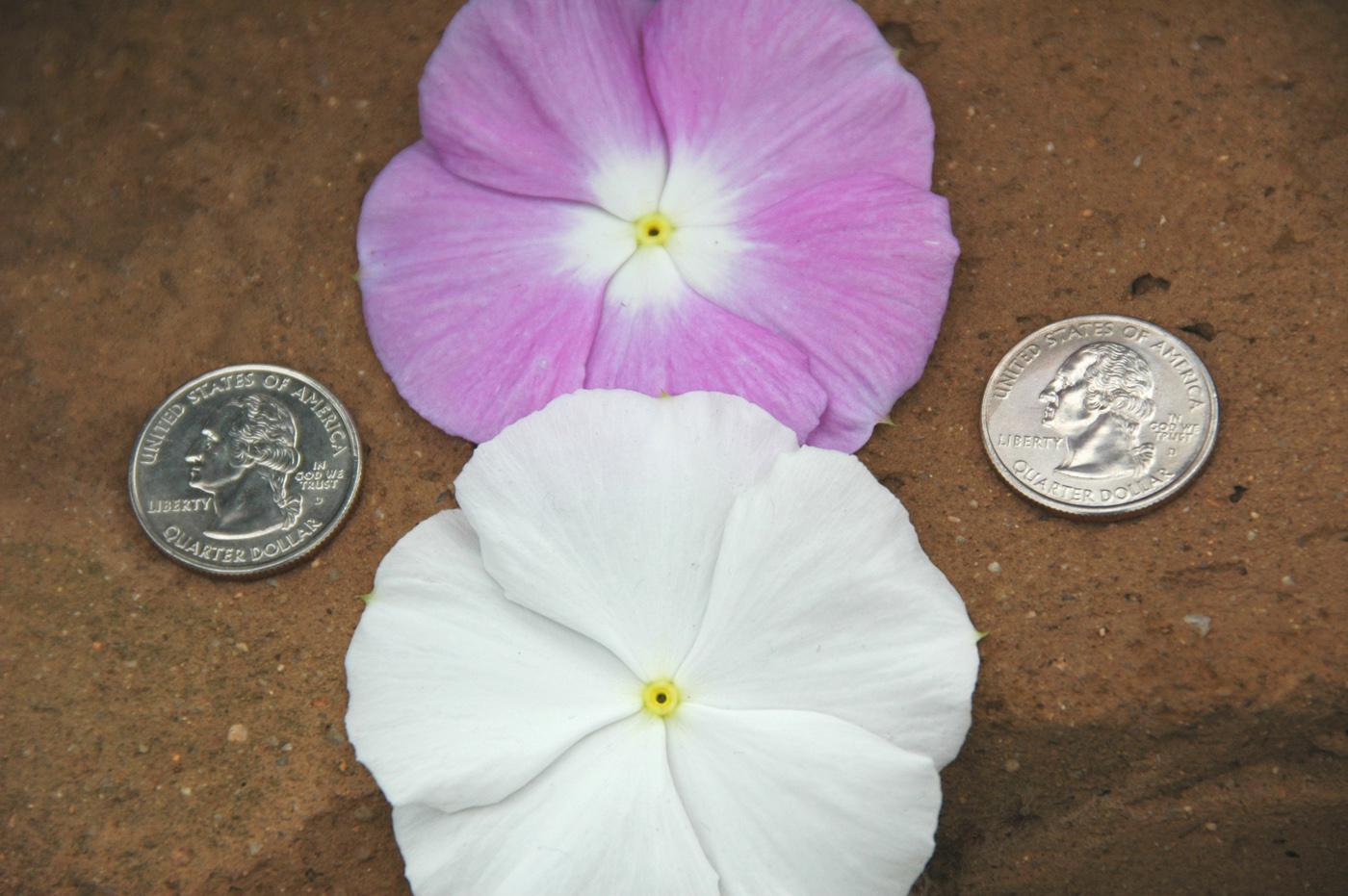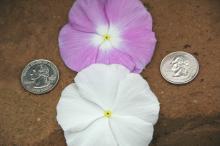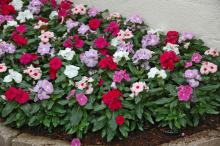Information Possibly Outdated
The information presented on this page was originally released on February 28, 2008. It may not be outdated, but please search our site for more current information. If you plan to quote or reference this information in a publication, please check with the Extension specialist or author before proceeding.
Cora vinca renews joy of periwinkle
By Norman Winter
MSU Horticulturist
Central Mississippi Research & Extension Center
A new series called Cora is about to put the joy back into growing periwinkles.
For the past few years, I have had the opportunity to see research on new flower varieties by Goldsmith Seed Co. in California. One of the most exciting things was watching the evolution of the Cora vinca, or periwinkle.
If you have ever planted periwinkles that quickly shriveled and died, the likely culprit was a disease called aerial phytophthora. There are other disease possibilities, but this is the most likely cause of growers' unhappiness with what was one of our most beloved annuals.
At Goldsmith, I was able to see how several vinca varieties responded after being exposed to the disease. Most of the plants would curl up and die just a few days after the inoculations.
There were always a couple of varieties that remained vigorous and unscathed, so each season we hoped for a new resistant variety to be released. To Goldsmith's credit, they waited until the time was right and production was possible. This year is the right time.
Cora vinca will be making its debut in garden centers everywhere this spring. The variety did as expected in university gardens, showing off its durability and beauty.
The Cora series will have five colors: apricot, burgundy, lavender, deep lavender, violet and white. There also will be a mix. In addition to the disease resistance, I am happy to report that the flowers themselves are quite large and very showy.
One of the most attractive features of the Cora, and periwinkles in general, is its foliage. The leaves are dark green and glossy, contrasting with the gorgeous flowers.
Even though the Cora is disease resistant, there is no use planting too early. Wait until the soil has warmed and the plant is able to expand out of its rootball with vigor.
While people may suffer from the heat and want to go indoors later this summer, these troopers will ensure beautiful beds. I like them with large bananas and elephant ears for a tropical look. The truth is they will work in any setting from cottage gardens to modern landscapes.
Choose a site in full sun. Plant them in raised beds for drainage and aeration. While they can tolerate heat, periwinkles hate wet feet.
Pay close attention to planting depth. Planting individual plants too deeply exposes the roots and stems to unfavorable growing conditions. Cora vinca plants reach 14 to 16 inches in height, with a spread of around 2 feet.
Add a good layer of mulch after planting to stabilize soil temperatures and prevent rapid loss of moisture through evaporation. Mulch also will deter weeds from growing and competing for nutrients and water. Once established, the Cora vinca will tolerate droughts, so don't overwater.
Spring eventually will come, and a trip to your local garden center will be a real treat this season with all the wonderful new flowers. One plant you must look for is the Cora vinca. You'll be glad you did.




